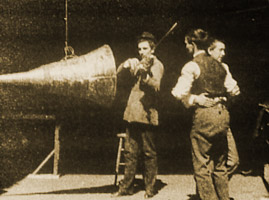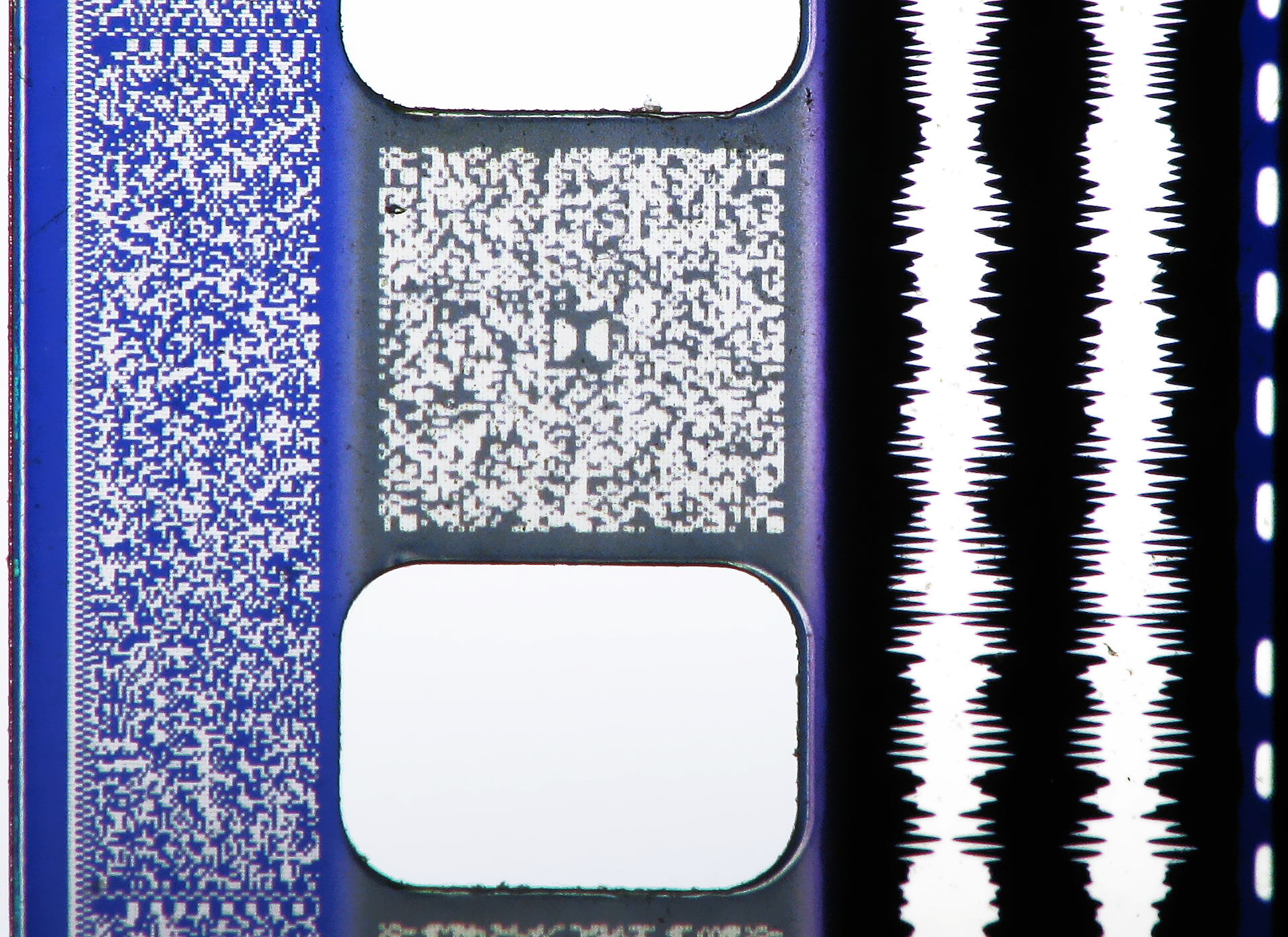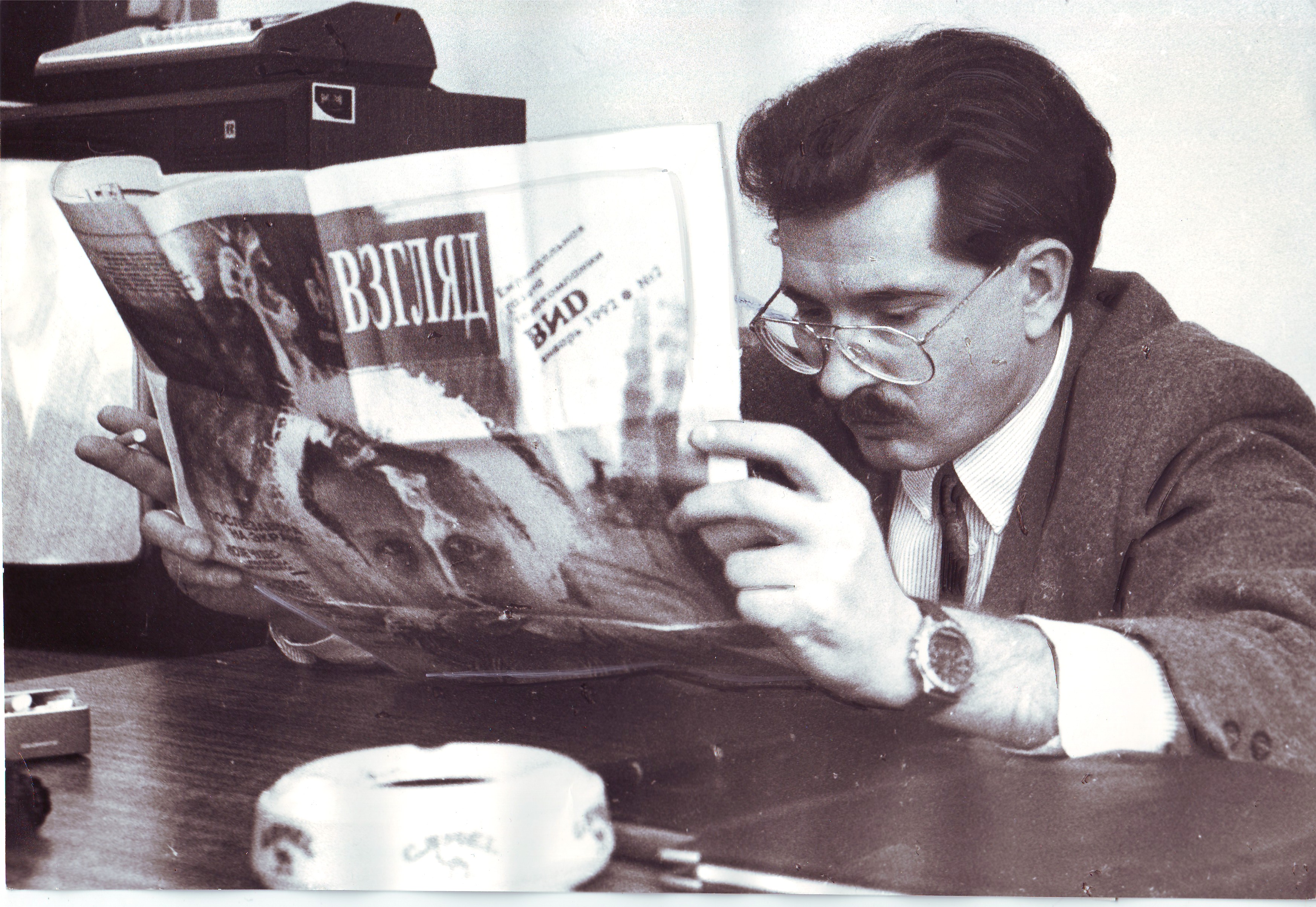|
Tri-Ergon
The Tri-Ergon sound-on-film system was developed from around 1919 by three German inventors, Josef Engl (1893–1942), Joseph Massolle (1889–1957), and Hans Vogt (1890–1979). The system used a photoelectric recording method and a non-standard film size (42mm) which incorporated the sound track with stock 35mm film. With a Swiss backer, the inventors formed Tri-Ergon AG in Zurich, and tried to interest the market with their invention. Ufa acquired the German sound film rights for the Tri-Ergon process in 1925, but dropped the system when the public showing of their first sound film suffered technical failures. The Tri-Ergon system appeared at a time when a number of other sound film processes were arriving on the market, and the company soon merged with a number of competitors to form the Tobis syndicate in 1928, joined by the Klangfilm AG syndicate in 1929 and renamed as Tobis-Klangfilm by 1930. While Tri-Ergon became the dominant sound film process in Germany and much of ... [...More Info...] [...Related Items...] OR: [Wikipedia] [Google] [Baidu] |
Sound Film
A sound film is a Film, motion picture with synchronization, synchronized sound, or sound technologically coupled to image, as opposed to a silent film. The first known public exhibition of projected sound films took place in Paris in 1900, but decades passed before sound motion pictures became commercially practical. Reliable synchronization was difficult to achieve with the early sound-on-disc systems, and amplification and recording quality were also inadequate. Innovations in sound-on-film led to the first commercial screening of Short film, short motion pictures using the technology, which took place in 1923. Before sound-on-film technology became viable, soundtracks for films were commonly played live with organs or pianos. The primary steps in the commercialization of sound cinema were taken in the mid-to-late 1920s. At first, the sound films which included synchronized dialogue, known as "talking pictures", or "talkies", were exclusively shorts. The earliest feature fil ... [...More Info...] [...Related Items...] OR: [Wikipedia] [Google] [Baidu] |
Sound-on-film
Sound-on-film is a class of sound film processes where the sound accompanying a picture is recorded on photographic film, usually, but not always, the same strip of film carrying the picture. Sound-on-film processes can either record an Analog signal, analog sound track or Digital data, digital sound track, and may record the signal either optical sound, optically or magnetism, magnetically. Earlier technologies were sound-on-disc, meaning the film's soundtrack would be on a separate phonograph record. History Sound on film can be dated back to the early 1880s, when Charles E. Fritts filed a patent claiming the idea. In 1923 a patent was filed by E. E. Ries, for a variable density soundtrack recording, which was submitted to the SMPE (now Society of Motion Picture and Television Engineers, SMPTE), which used the mercury vapor lamp as a modulating device to create a variable-density soundtrack. Later, Theodore Case, Case Laboratories and Lee De Forest#Phonofilm sound-on-film pro ... [...More Info...] [...Related Items...] OR: [Wikipedia] [Google] [Baidu] |
UFA GmbH
UFA GmbH, shortened to UFA (), is a film and television production company that unites all production activities of the media conglomerate Bertelsmann in Germany. The original UFA was established as on December 18, 1917, as a direct response to foreign competition in film and propaganda. UFA was founded by a consortium headed by Emil Georg von Stauß, a former Deutsche Bank board member. In March 1927, Alfred Hugenberg, an influential German media entrepreneur and later minister of the economy and minister of agriculture and nutrition in Adolf Hitler's cabinet, purchased UFA and transferred ownership of it to the Nazi Party in 1933. In 1942, as a result of the Nazi policy of "forcible coordination" known as the Gleichschaltung, UFA and all of its competitors, including Tobis Film, Tobis, Terra Film, Terra, Bavaria Film and Wien-Film, were bundled together with Nazi-controlled foreign film production companies to form the super-corporation UFA-Film GmbH (Ufi), with headquarters ... [...More Info...] [...Related Items...] OR: [Wikipedia] [Google] [Baidu] |
Tobis Film
Tobis Film was a German film production and film distribution company. Founded in the late 1920s as a merger of several companies involved in the switch from silent film, silent to sound films, the organisation emerged as a leading German sound studio. Tobis used the Tri-Ergon sound-on-film system under the Tobis-Klang trade name. The UFA GmbH, UFA production company had separate rights to the Tobis system, which it used under the trade name of Ufa-Klang. Some Tobis films were released in Germany by the subsidiary Europa Film. Its principal production studios were the Johannisthal Studios in Berlin. During the Nazi era, Tobis was one of the four major film companies along with Terra Film, Bavaria Film and Universum Film AG, UFA. In 1942 all these companies were merged into a single state-controlled industry bringing an end to Tobis' independent existence, though films continued to be released under the Tobis banner. International operations From 1933 until 1938, Tobis controll ... [...More Info...] [...Related Items...] OR: [Wikipedia] [Google] [Baidu] |
VIDgital
VID (), (stylized as ВИD, lit. "View"; acronym of ''Vzglyad (Russian TV program), Vzglyad i Drugiye'', "Outlook and Others",) formerly VIDgital () from 2017 to 2020, is a Russian and former Soviet TV production company. VID produces shows for Channel One Russia, NTV (Russia), NTV and OTR. It is best known for producing the television programmes ''Wait for Me (TV program), Wait for Me'' (), designed to help people find loved ones and ''Pole Chudes'' () which is a popular Russian version of ''International versions of Wheel of Fortune, Wheel of Fortune''. VID's TV shows are also aired by Inter (TV channel), Inter, All-National TV, ONT, Channel One Eurasia, Evraziya and Prime (Moldovan TV channel), Prime TV channels. History 1987–2000 The VID Television Company was founded in 1987 by Vladislav Listyev, Andrey Rasbash, Alexander Lyubimov, Alexander Politkovsky, Ivan Demidov and Alexander Gorozhankin, based on Vzglyad, a Russian creative association affiliated with the Youth ... [...More Info...] [...Related Items...] OR: [Wikipedia] [Google] [Baidu] |
Phonofilm
Phonofilm is an optical sound-on-film system developed by inventors Lee de Forest and Theodore Case in the early 1920s. In 1919 and 1920, de Forest, inventor of the audion tube, filed his first patents on a sound-on-film process, DeForest Phonofilm, which recorded sound directly onto film as parallel lines. These parallel lines photographically recorded electrical waveforms from a microphone, which were translated back into sound waves when the movie was projected. The Phonofilm system, which recorded synchronized sound directly onto film, was used to record vaudeville acts, musical numbers, political speeches, and opera singers. The quality of Phonofilm was poor at first and while it improved somewhat in later years, it was never able to match the fidelity of sound-on-disc systems such as Vitaphone, or later sound-on-film systems such as RCA Photophone or Fox Movietone. The films of de Forest were short films made primarily as demonstrations to try to interest major studios i ... [...More Info...] [...Related Items...] OR: [Wikipedia] [Google] [Baidu] |
William Fox (producer)
Wilhelm Fried Fuchs (; January 1, 1879 – May 8, 1952), commonly known as William Fox, was a Hungarian Americans, Hungarian-American film industry executive who founded the Fox Film, Fox Film Corporation in 1915 and the Fox Theatres, Fox West Coast Theatres chain in the 1920s. Although he lost control of his film businesses in 1930, his name was used by 20th Century Fox (now part of the Walt Disney Company) and continues to be used in the trademarks of the present-day Fox Corporation, including the Fox Broadcasting Company, Fox News, Fox Sports and Foxtel. Early life Wilhelm Fried Fuchs (later William Fox) was born in Tolcsva, Hungary. His parents, Michael Fuchs and Anna Fried, were both Hungarian Jews. The family immigrated to the United States when William was nine months old and settled in New York City, where they had twelve more children, of whom only six survived. To help the family financially William found a job selling candy and newspapers in Central Park. At the ag ... [...More Info...] [...Related Items...] OR: [Wikipedia] [Google] [Baidu] |
Fox Film Corporation
The Fox Film Corporation (also known as Fox Studios) was an American independent company that produced motion pictures and was formed in 1914 by the theater "chain" pioneer William Fox (producer), William Fox. It was the corporate successor to his earlier Greater New York Film Rental Company and Box Office Attraction Company (founded 1913). The company's first film studios were set up in Fort Lee, New Jersey, but in 1917, William Fox sent Sol M. Wurtzel to Hollywood, California to oversee the studio's new West Coast of the United States, West Coast production facilities, where the climate was more hospitable for filmmaking. On July 23, 1926, Fox Studios bought the patents of the Movietone sound system for recording sound onto film. After the Wall Street Crash of 1929, William Fox lost control of the company in 1930, during a hostile takeover. Under new president Sidney R. Kent, the new owners merged the company with Twentieth Century Pictures to form 20th Century Studios, Twent ... [...More Info...] [...Related Items...] OR: [Wikipedia] [Google] [Baidu] |
Electrostatic Loudspeaker
An electrostatic loudspeaker (ESL) is a loudspeaker design in which sound is generated by the force exerted on a membrane suspended in an electrostatic field. Design and functionality The speakers use a thin flat diaphragm usually consisting of a plastic sheet coated with a conductive material such as graphite sandwiched between two electrically conductive grids, with a small air gap between the diaphragm and grids. For low distortion operation, the diaphragm must operate with a constant charge on its surface, rather than with a constant voltage. This is accomplished by either or both of two techniques: the diaphragm's conductive coating is chosen and applied in a manner to give it a very high surface resistivity, and/or a large value resistor is placed in series between the EHT (Extra High Tension or Voltage) power supply and the diaphragm (resistor not shown in the diagram here). However, the latter technique will still allow distortion as the charge will migrate across the ... [...More Info...] [...Related Items...] OR: [Wikipedia] [Google] [Baidu] |
RCA Photophone
RCA Photophone was the trade name given to one of four major competing technologies that emerged in the American film industry in the late 1920s for synchronizing electrically recorded audio to a motion picture image. RCA Photophone was an optical sound, "variable-area" film exposure system, in which the modulated area (width) corresponded to the waveform of the audio signal. The four other major technologies were the Warner Bros. Vitaphone sound-on-disc system, as well as three "variable-density" sound-on-film systems, Lee De Forest's Phonofilm, and Fox- Case's Movietone, and the German system Tri-Ergon. When Joseph P. Kennedy and other investors merged Film Booking Offices of America (FBO) with the Keith-Albee-Orpheum theater chain and Radio Corporation of America; the resulting movie studio RKO Radio Pictures used RCA Photophone as its primary sound system. In March 1929, RKO released ''Syncopation'', the first live-recorded film made with RCA Photophone. His ... [...More Info...] [...Related Items...] OR: [Wikipedia] [Google] [Baidu] |
Deutsches Museum
The Deutsches Museum (''German Museum'', officially (English: ''German Museum of Masterpieces of Science and Technology'')) in Munich, Germany, is the world's largest museum of science museum, science and technology museum, technology, with about 125,000 exhibited objects from 50 fields of science and technology. It receives about 1.5 million visitors per year. The museum was founded on 28 June 1903, at a meeting of the Verein Deutscher Ingenieure, Association of German Engineers (VDI) as an initiative of Oskar von Miller. It is the largest museum in Munich. For a period of time the museum was also used to host pop and rock concerts including The Who, Jimi Hendrix and Elton John. Museumsinsel The main site of the Deutsches Museum is a small island in the Isar river, which had been used for rafting wood since the Middle Ages. The island did not have any buildings before 1772 because it was regularly flooded prior to the building of the Sylvensteinspeicher. In 1772 the ... [...More Info...] [...Related Items...] OR: [Wikipedia] [Google] [Baidu] |








